Vice Presidential Debate Analysis Report - October 1, 2024
Welcome to the debate analysis report for the Vice Presidential debate between JD VANCE and TIM WALZ held at the CBS Broadcast Center in New York on October 1, 2024. This report offers a comprehensive breakdown of speaking time distribution, sentiment analysis, cosine similarity between the candidates and moderators, and much more. The analysis is based on the full transcript provided by CBS News.
Speaking Time Distribution
This section displays the percentage of time each candidate spoke during the debate. It helps visualize how speaking time was distributed between the participants and moderators.
| Participant | Percentage (%) |
|---|---|
| JD VANCE | 42.82% |
| TIM WALZ | 41.71% |
| Moderators | 15.48% |
Extractive Summary
In this section, we provide a concise summary for each candidate using extractive summariztion. This technique selects the most important sentences from the debate based on word frequencies and relevance, offering a quick overview of the main points each candidate discussed.
JD VANCE
I was raised in a working class family. My mother required food assistance for periods of her life. My grandmother required Social Security help to raise me. I went to college on the GI bill after I enlisted in the Marine Corps and served in Iraq . I stand here asking to be your Vice President with extraordinary gratitude for this country, for the American dream that made it possible for me to live my dreams .
TIM WALZ
The expansion of Israel and its proxies is an absolute, fundamental necessity for the U.S. to have the steady leadership there . The world saw it on that debate stage a few weeks ago, and it's not just that. Those that were closest to Donald Trump that understand how dangerous he is when the world is this dangerous . Vice President Harris has seen steady leadership out of the White House, says Sen. Vance . Vance: We've seen a calmness that is able to draw on the coalitions, to bring them together, understanding that our allies matter .
Word Clouds
Word clouds provide visual representation of the most frequently used words by each candidate. The larger the word, the more often it was used, helping to quickly identify key topics or terms mentioned by each candidate.
JD VANCE
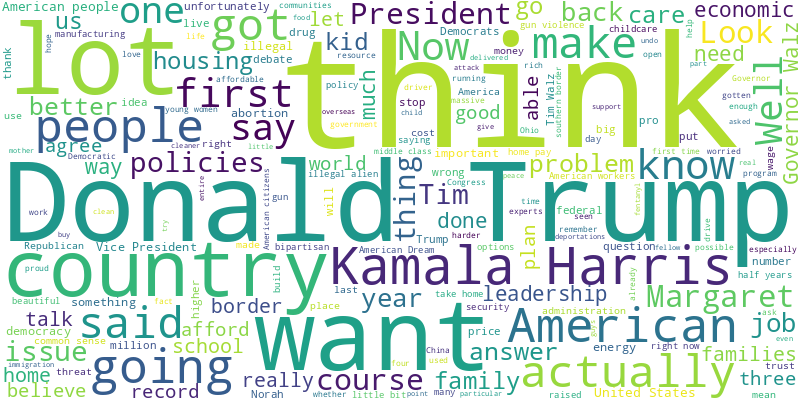
TIM WALZ
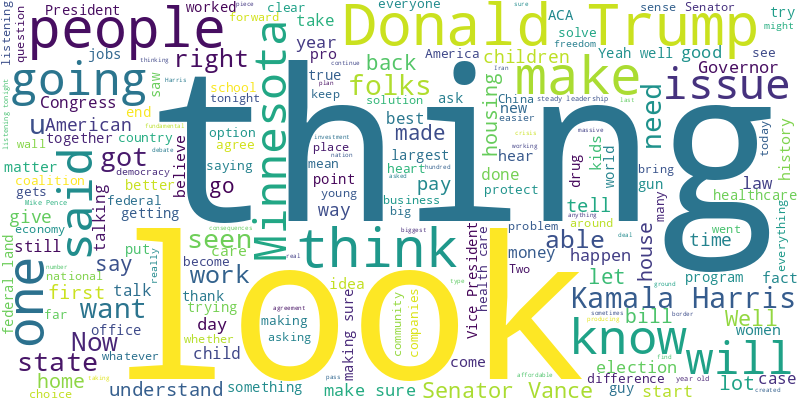
Sentiment Over Time
This section tracks the sentiment (positive, neutral, or negative) of each candidate's speech as the debate progresses. The sentiment is calculated based on the polarity of their statements during their turns to speak.
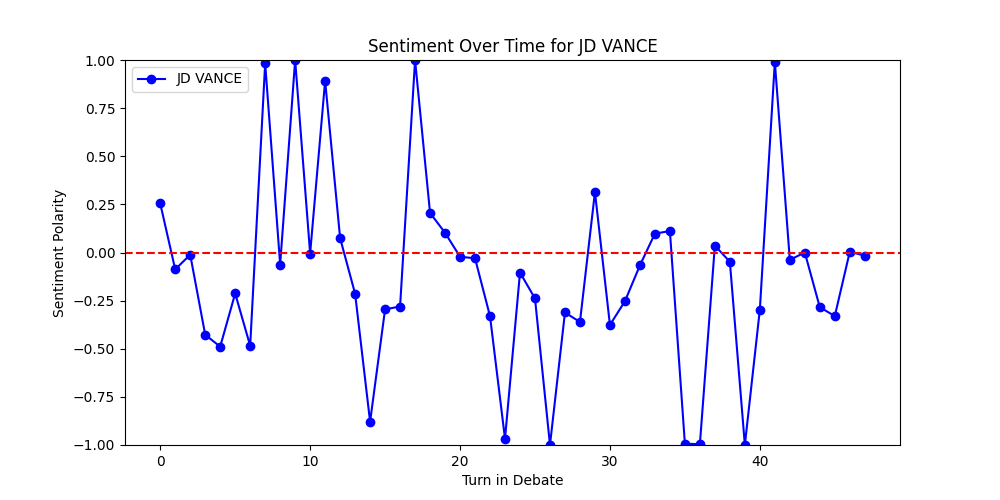
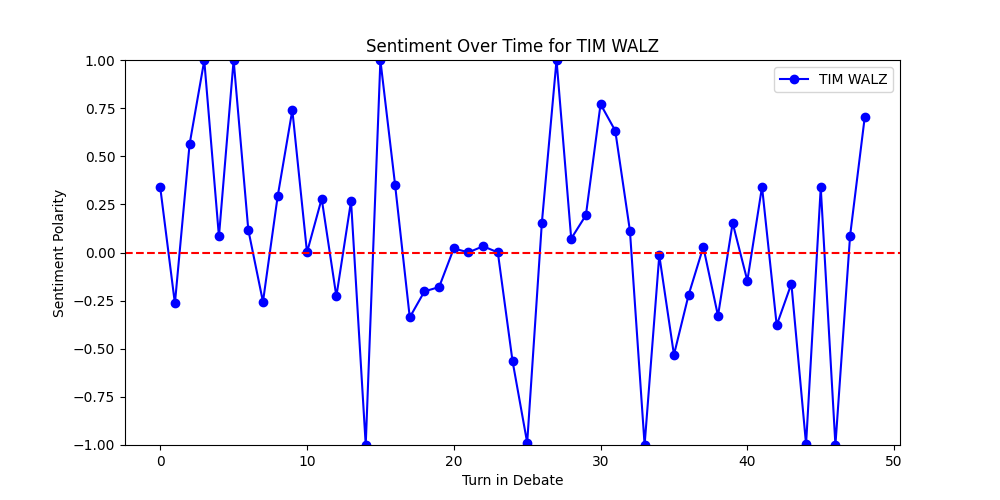
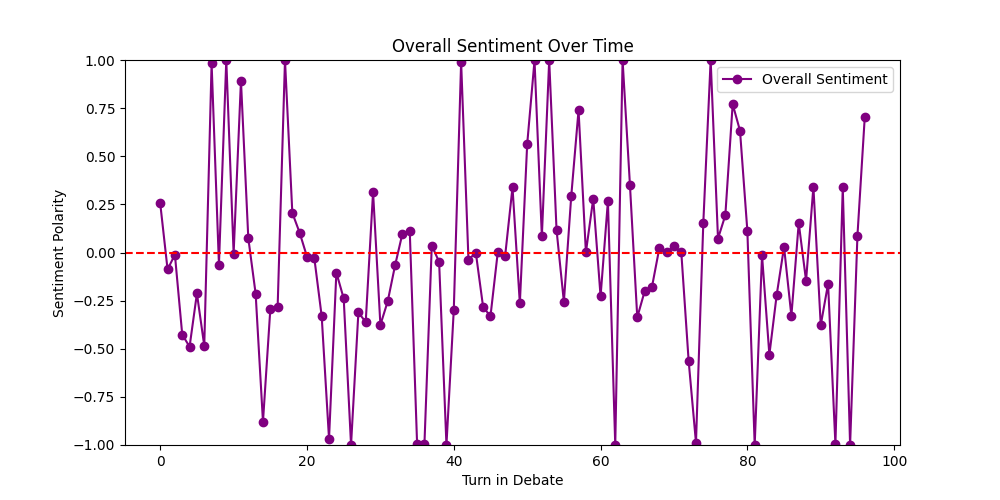
Cosine Similarity Over Time
Cosine Similarity Over Time measures how similar the language used by two candidates or between candidates and moderators is throughout the debate. It ranges from -1 to 1, where: 1 indicates that the language or topics are exactly alike at that point in time, 0 means there is no similarity, and -1 indicates complete dissimilarity.
By tracking this over the course of the debate, you can observe where candidates aligned or diverged in their arguments and language choices. Peaks suggest agreement or overlap in topics, while troughs indicate moments of contrasting positions or focus.
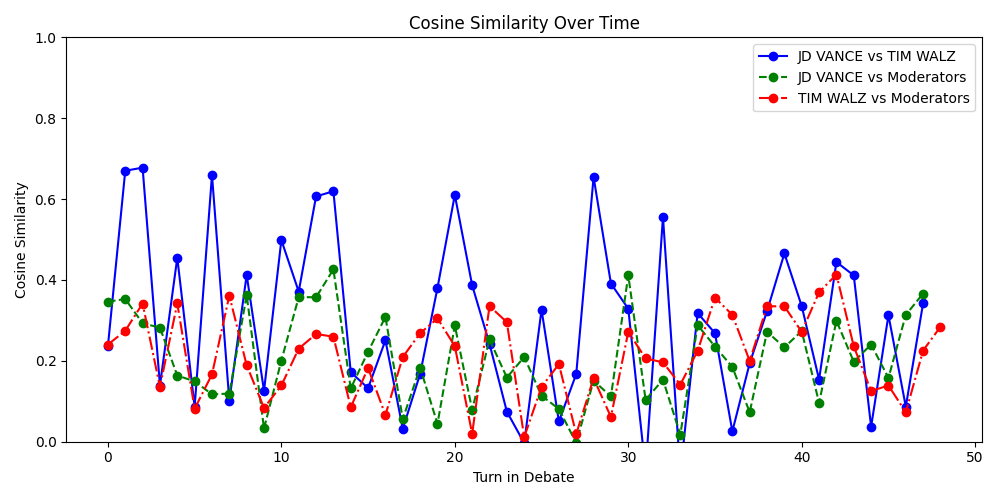
Named Entity Frequency
Named Entity Recognition (NER) identifies key entities such as people, organizations, locations, and events mentioned during the debate. By counting the frequency of these entities, NER helps highlight the topics and figures most central to each candidate's arguments. Higher frequencies indicate greater focus on those specific entities during the debate.
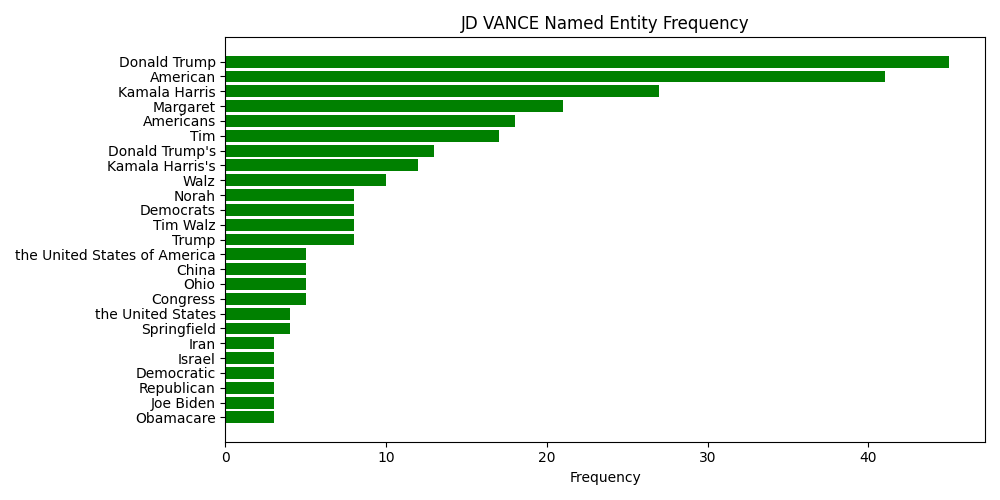
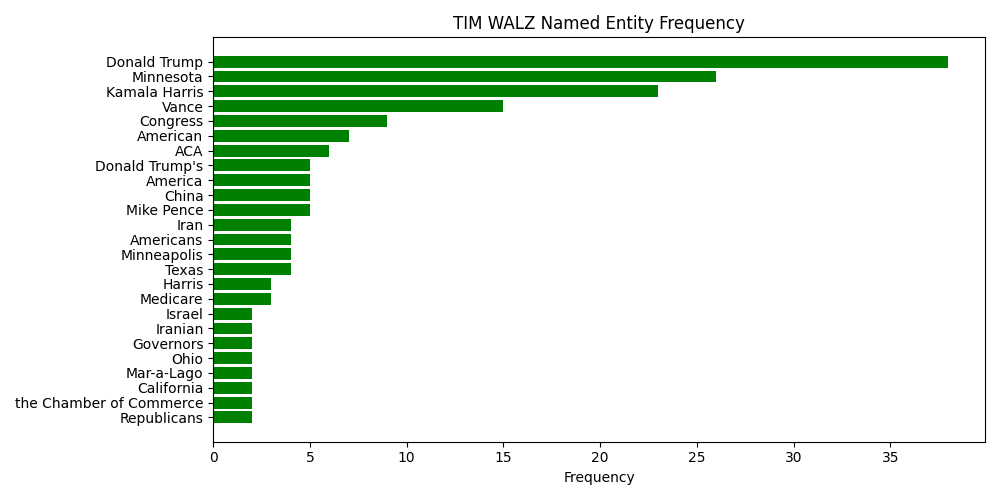
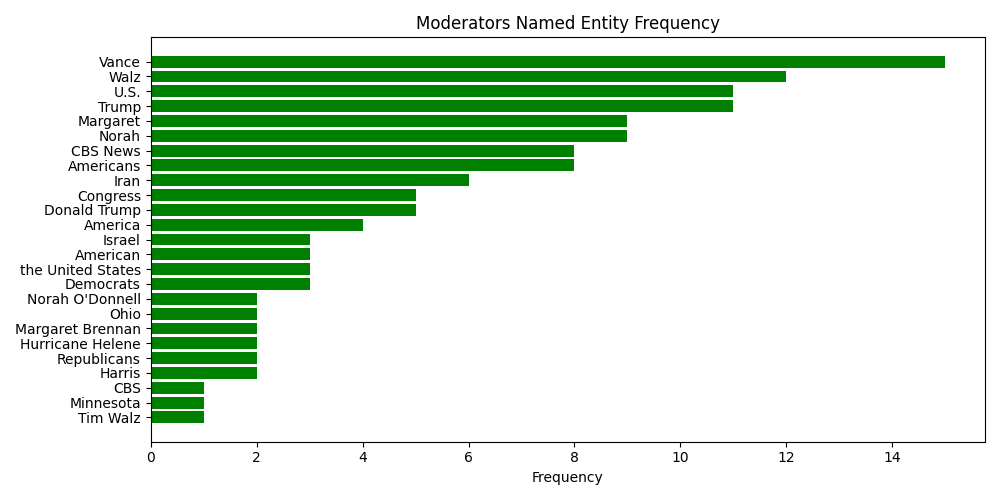
Ngrams (Word Combinations)
Ngrams refer to combinations of words that commonly appear together. A unigram represents a single word, a bigram represents a two-word phrase, and a trigram represents a three-word phrase. Analyzing ngrams helps reveal key phrases or terms that candidates repeatedly use, offering insights into their primary themes, talking points, and rhetorical strategies during the debate.
JD VANCE
- three half years: 6
- take home pay: 6
- united states america: 5
- want answer question: 4
- thanks kamala harris: 4
- governor walz said: 4
- donald trump president: 4
- kamala harris policies: 4
- donald trump border: 4
- kamala harris open: 4
TIM WALZ
- senator vance said: 6
- paid family medical: 4
- family medical leave: 4
- donald trump said: 3
- donald trump talking: 2
- closest donald trump: 2
- vice president harris: 2
- donald trump office: 2
- donald trump fickle: 2
- jobs across country: 2